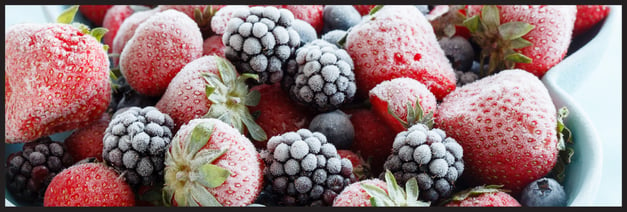
For the past few years, consumers have been giving frozen snacks the cold shoulder. A demand for healthier options challenged manufacturers to re-think their offerings—and it’s beginning to pay off! Today, natural and organic innovations are adding appeal to a category previously plagued by negative perceptions of quality, taste, and healthfulness; brands such as Amy’s Kitchen, Annie’s, EVOL and Luvo have reenergized the category with premium offerings and more natural, additive-free foods. As a result, the category is beginning to see modest growth, with sales expected to eclipse $5 billion by 2020. Here, we look at opportunities in the frozen snack category.
A Snackable Moment
Americans are no longer sitting down to three meals per day—if they’re even sitting down to meals at all. Busy lifestyles and a shift from three large meals per day to smaller, more frequent snackable moments is good news for this industry. Researchers found that 50% of all consumers view frozen snacks as a meal replacement—a quick lunch or easy dinner when they don’t feel like cooking—and that number jumps to almost 70% for Hispanic consumers. This leads industry analysts to believe that convenient, better-for-you frozen snacks could benefit, particularly considering their ease of preparation. Brands that offer light bites with functional benefits, such as protein for sustained energy, will appeal to on-the-go health conscious consumers.
Kid-Friendly Foods
Researchers found that today’s kids are heavily influencing their parents’ purchases at the grocery store—in fact, children age 5-14 are believed to influence 78% of total grocery purchases. Parents recognize the importance of buying foods their children will actually eat, reflecting the importance of frozen snack marketing to convey overall taste and popularity among kids. Although moms are eager to please little palates, she still insists on keeping it healthy. More than 80% of parents agree that snacks can be both tasty and healthy, and include wholesome, recognizable ingredients. Generating interest among kids in advertising targeted to their interests and tastes, whether through YouTube, social, or television advertising while conveying the health benefits and natural ingredients to moms is likely to be a winning strategy for brands.
Off The Menu
Restaurant-branded snacks continue to emerge as a popular and convenient option for consumers seeking to re-create the experience at home. Almost one fifth of consumers who purchase frozen snacks indicate products similar to those on restaurant menus are an important factor when purchasing, while 39% indicate a familiar brand is important. Several national restaurant chains, including Auntie Anne’s and TGI Friday’s, have packaged signature items for easy heating and serving at home to appeal to those looking for a restaurant experience without the expense of dining out. Although they may not be the healthiest option, these snacks will appeal to the 69% of consumers who believe that snacking is a guilty pleasure.
When it comes to snacking, offering a variety of options that appeal to consumer’s desire for tasty, quick, and healthy indulgences will be a winning strategy for frozen food brands. Conveying your message where and when it’s most relevant to the consumer is key. Women’s Marketing offers deep insights into both the category and the consumer. Contact us today to discover what we can do for your brand.
Sources: U.S. Frozen Snacks 2016, KidPower Specialty Retail Report 2015



Comments